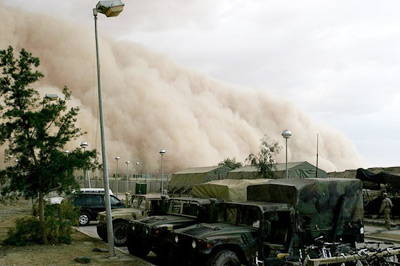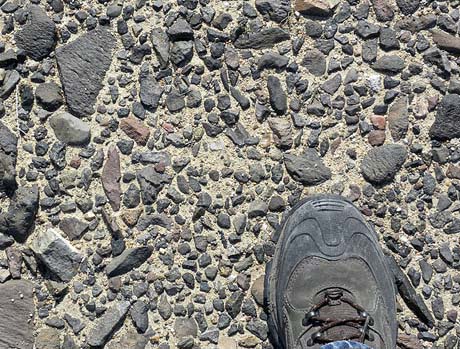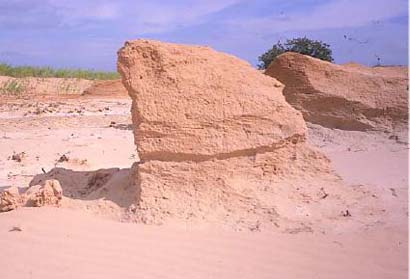
Wind Erosion
Imagine trying to walk in a wind storm like this one, in which storm-force winds swirl thousands of sand grains around you. What might it feel like to have grains of sand blasted against your skin? It would hurt because of the abrasive power of fast-moving sand striking you. This is the process of abrasion, or the sandblasting action of wind-blown sand. Both sediment removal and abrasion work to erode eolian environments. Click through the tabs to learn more about sediment removal and abrasion.
 Avatar: Deflation Basins Avatar: Deflation Basins
The sand that is removed during a storm or other wind event carries sand away from an area. Listen to this presentation to find out what is left behind after the sand is removed. Select the play button to begin the avatar video, and then use the navigation buttons to pause/stop, continue, or reset the avatar. View the presentation as often as you would like, and take notes as you follow along. Be sure to set your volume at a reasonable level before you begin.
|
| « Previous |
Next » |
|

Wind usually removes only sand and dust-sized particles. Larger sediment is left behind; this is called the lag deposit. Lag deposits harden together to form desert pavement, like you see in this image. Desert pavement acts like a protective covering that keeps the soil from further deflation.
|
| « Previous |
Next » |
|

Wind abrasion is like sandblasting. Wind-blown grains of sand impact rock surfaces and small particles are knocked off the rock. Pebbles that have been shaped and polished by the wind are called ventifacts. The abrasive action of sand can also leave grooves and polished surfaces on desert pavement. Though less common, wind abrasion does produce larger landforms in some desert regions linear ridges, called yardangs. Yardangs, like the ones shown here, resemble the hull of a boat. Facing the wind is a steep blunt face that gradually gets lower and narrower through abrasive erosion. Yardangs form only in the driest areas of deserts.
|
| « Previous |
Next » |
© KC Distance Learning. All rights reserved.


